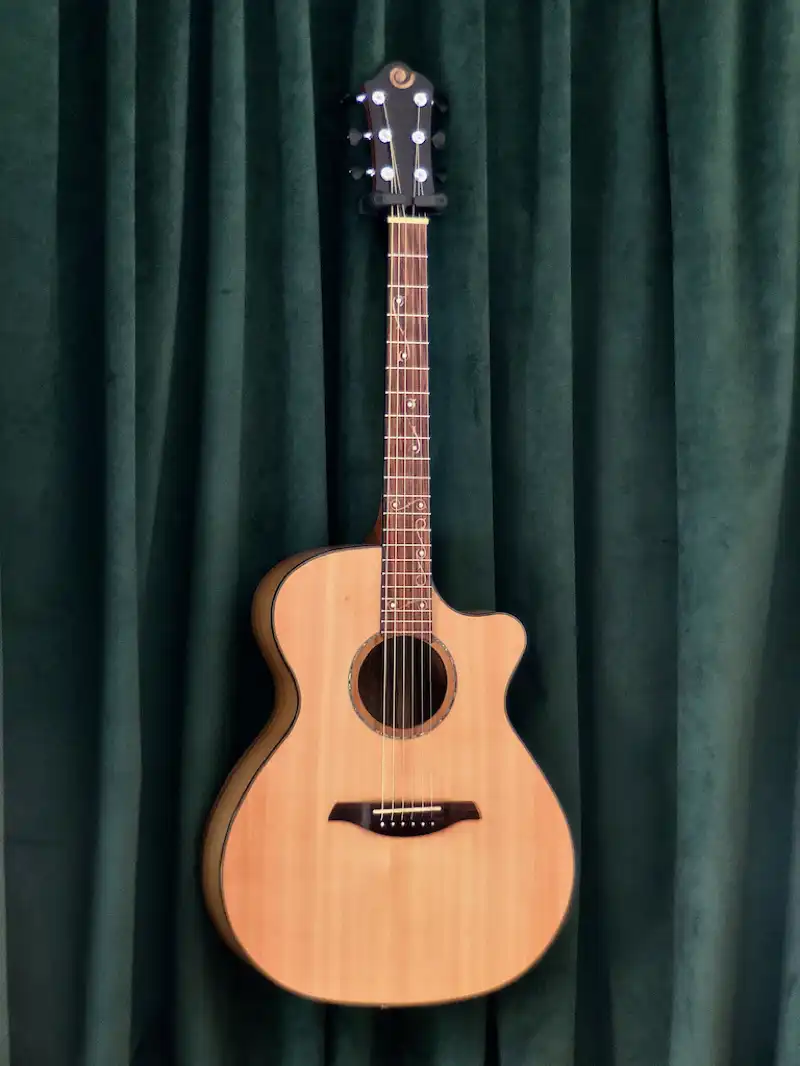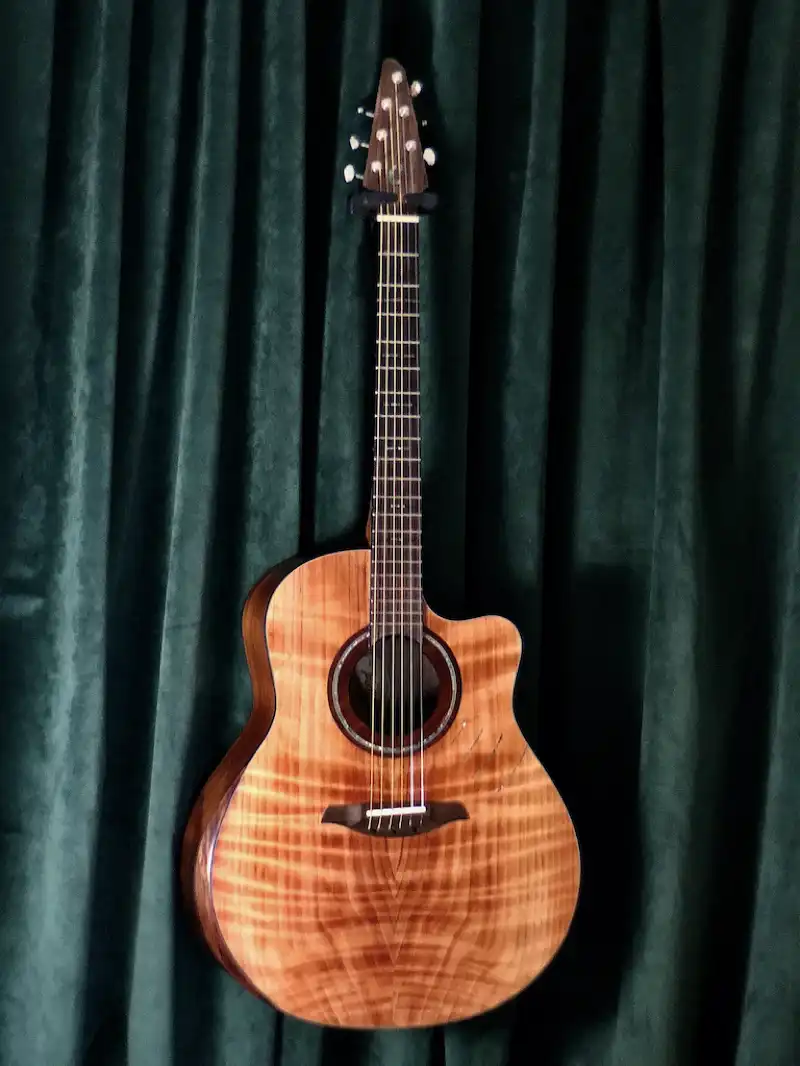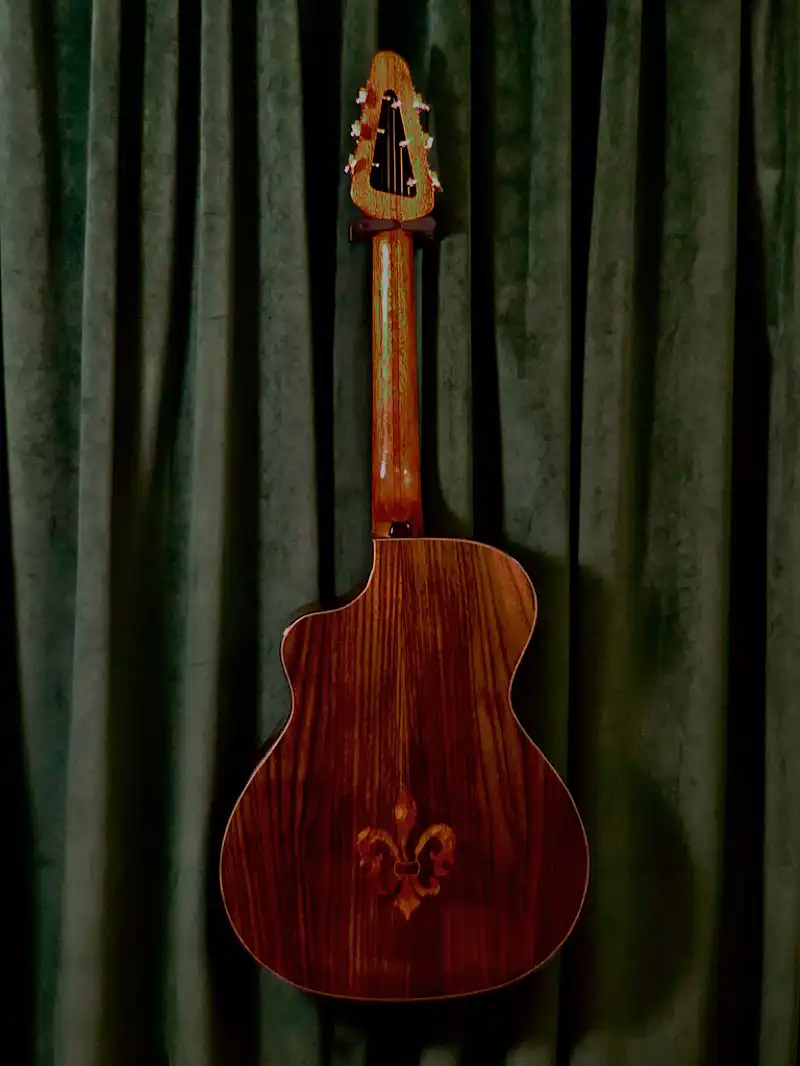Early Models

continental
The Cedar and Rosewood continental featured a double-X bracing pattern in an extra-deep OM body size, but was otherwise traditionally built. "Bright" and "loud" were the two most-commonly used adjectives for this design.

canon
The Oregon Myrtle and Port Orford Cedar canon incorporated Spruce/Rosewood/Spruce laminated braces and a non-ladder braced back in a 16" wide body. Distinguishable due to its pronounced bass, this was a popular design among performers.

tonnerre
Tonnerre, a Walnut and Redwood jumbo 17" body, was one of my lightest-weight guitars at 3.75 lbs, largely due to the use of carbon fiber for laminated braces, bridgeplate, and the Dragonplate D-tube instead of a truss rod. This was my first model to utilize a pinless bridge. Big sound from a comfortable, lovely guitar design.





